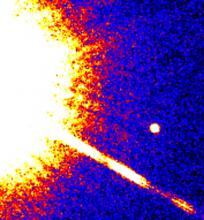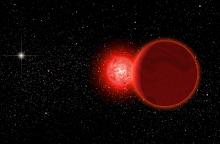Listen to today's episode of StarDate on the web the same day it airs in high-quality streaming audio without any extra ads or announcements. Choose a $8 one-month pass, or listen every day for a year for just $30.
You are here
Sending a Message
A group of scientists and musicians is trying to start a conversation over the back fence. The team sent messages to a star system that’s about 12 light-years away. As stars go, that’s right next door. The first messages went out two years ago tomorrow. So if anybody’s there, and is in a talkative mood, their reply could reach us as early as 2042.
GJ 273 is a red dwarf — a star that’s much smaller and fainter than the Sun. It was picked as a target because it has a planet in the “Goldilocks zone.” That’s the distance from the star where temperatures are just right for liquid water — a key ingredient for life.
Astronomers have beamed signals to a few other stars over the last few decades. But this was the first one aimed at a star that’s known to have a planet that could be habitable.
The message was put together by scientists and by participants in a music festival in Spain. It consists of an interstellar “hello,” along with instructions for deciphering the message — all done with mathematics. It also includes 18 snippets of music, each of which is 10 seconds long.
Everything was beamed into space by a radio telescope in Norway. It took three days to send the whole sequence. More music and math were sent in May of last year — greetings to another star system.
GJ 273 is too faint to see with the eye alone. But it appears quite near Procyon, the brightest star of Canis Minor, the little dog. They’re high in the south-southeast at first light.
Script by Damond Benningfield






